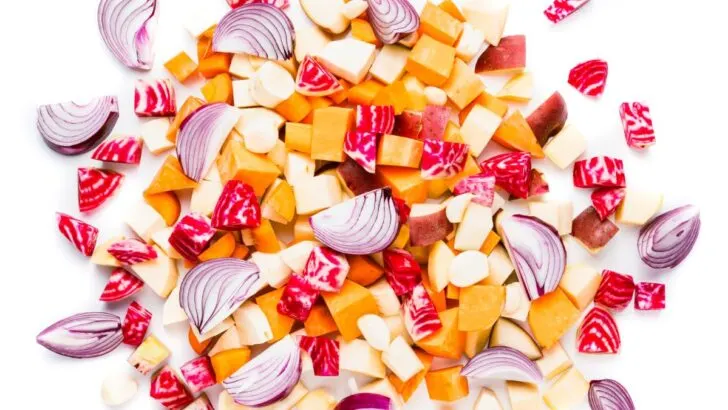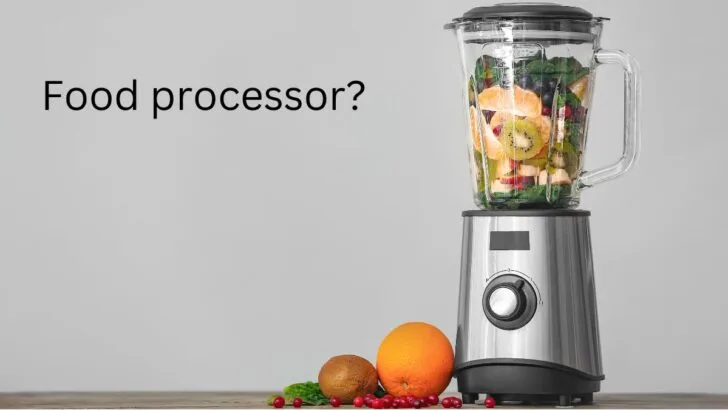Nothing is more vexing than a recipe that requires a food processor when you don’t have one!
This leads you to frantically research whether your good old blender can act as one or not, as frankly speaking they both have similar features and settings.
Blenders can be used as food processors for a majority of recipes, but they might produce slightly different results. You can only use blenders for small amounts as well.
You also can’t use it to make pastry dough or to knead any dough.
Other than this, there are still a lot of things that you should be aware of when substituting a food processor with a blender, and to learn more, keep on reading!
What Sets a Food Processor Apart From a Blender?
Knowing the difference between a food processor and a blender is essential to understand whether they can be used interchangeably.
Simply put, the significant difference is that food processors are made to perform a variety of food preparation jobs. In contrast, blenders are made to create some sort of smoothie.
Food processors are made to handle things you would often have to do by hand, for instance kneading doughs, mixing food, chopping vegetables or fruits, and other similar chores.
For this purpose, they are equipped with broad, flat rotors and discs to produce specialized cuts like slices or shreds. Hence, they quickly process a variety of dry components but struggle with moist or liquid ones.
On the other hand, blenders are equipped with tall walled jars, almost like a pitcher, to keep liquid ingredients contained while they are combined.
The structure and height of the blending jar play a vital role in ensuring an even blend and also keep the contents moving around the jar and blades.
Therefore, wet and dry components are combined and ground up in blenders to make soups, smoothies, and purees.

How Can I Process Food Using A Blender?
Now that you know about the specificities of both of these types of kitchen equipment, let us discuss how to use a bender in place of the other.
To process your food in a blender all you have to do is follow the below-mentioned steps:
- First and foremost, change the blending speed to the lowest mode.
- After that, carefully verify that all of the other modes on your blender are set to regular instead of liquid or puree. Do not add any kind of extra liquid.
- Next, utilize the pulse setting if you want to create granular food, like bread crumbs. In case your blender doesn’t have this option, then, for 30 seconds at a time, mix on high in the blender.
- For a wet mixture like a puree, blend the ingredients until it is smooth using the puree function on your blender.
That being said, remember to work in smaller batches than you normally can with a food processor since most blenders have a limited capacity and struggle to chop bigger quantities of ingredients.
Also, some of the functions that a blender can not perform are chopping, grating, and slicing, so it is best to use a food processor or to manually do all of these food preparation jobs if a recipe requires so.
And if a recipe includes kneading dough, a blender cannot carry out this task at all.
What Are Some Alternatives to a Food Processor?
Various options could fill up the role of a food processor other than a blender.
They include:
- Grater grinder
- Mixer
- Chopper
- Knives
- Cooking food to soften
- Rolling pin and a plastic bag
- Mortar and pestle
However, the confusion on which options to go for depends upon the particular situation you are using it in. If you want to mix up different ingredients, for example, buttermilk or eggs for a cake, you would be better off using a mixer.
For slicing your vegetables or fruits, you may use knives or even a grater to slice your food.
A grinder despite being bulkier than a food processor could be used to easily mince meat or for other applications such as making nut butter.
However, a mortar and pestle could also be used as another substitute and work as well as a grinder.
For crushing, you may use a rolling pin to smash things like chips, beans, and biscuits by placing them in a sealed plastic bag and rolling the bag over them.
To prepare purees without a blender or food processor, you can boil the ingredients until they are soft. Therefore, making it easier for you to blend or puree by hand.
Should I Buy a Food Processor? Is It Worth It?
Food processors are part of fundamental kitchen tools. A food processor may significantly reduce your preparation time if you frequently create items that need mincing, shredding, or chopping.
Manually chopping veggies might take ten minutes or longer.
Furthermore, food processors can also increase cooking safety. You don’t even need to chop anything up with a sharp knife; just place the veggies or other ingredients in your food processor.
This prevents any blades from cutting into your fingertips.
Another reason to buy one is that there is a plethora of food items that can be easily made by them.
For instance, you may prepare bread crumbs, dough, carrot cake, butter and flour mixtures, and crushed graham crackers for pie crusts. These are just a snippet of the many things you can make!
All in all, whether they are worth it or not, it all comes down to your personal choice too. But in our opinion, they are worth every penny!
Final Word on Blenders and Food Processors
While many recipes can easily swap a food processor with a blender, provided the above-mentioned steps are followed, buying a food processor can be of great advantage too.
And in case, you don’t want to buy it, then your blender along with some other pieces of equipment and some manual strength is all that you need instead of owning one!


